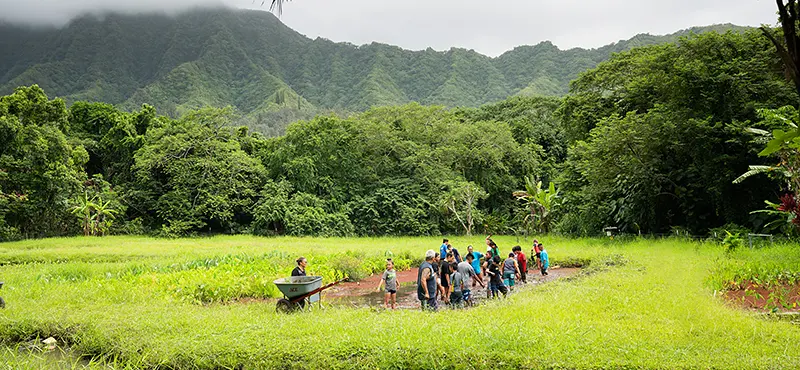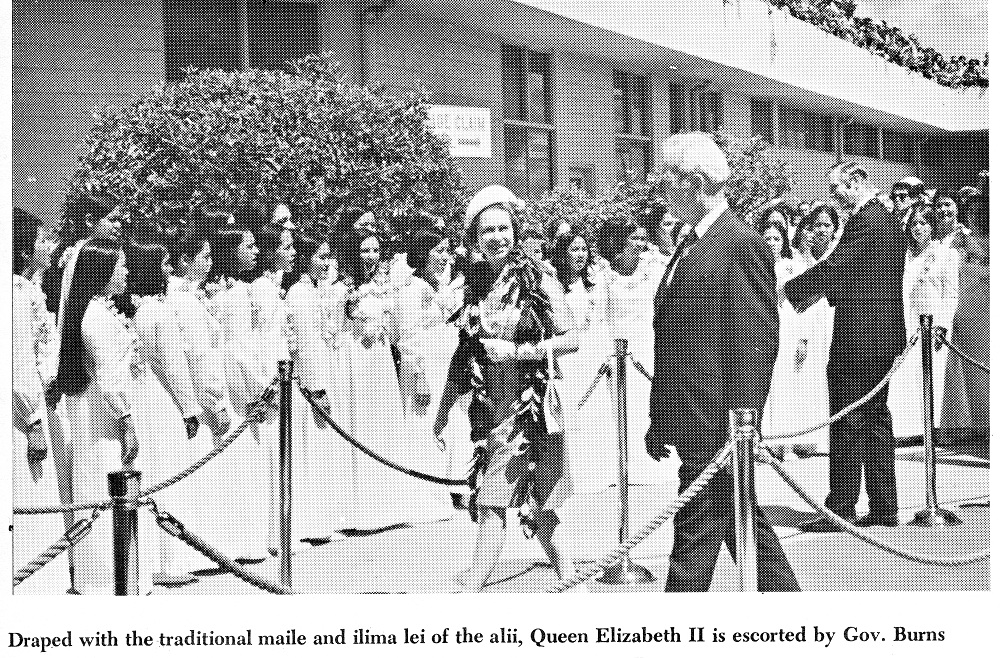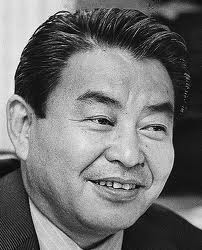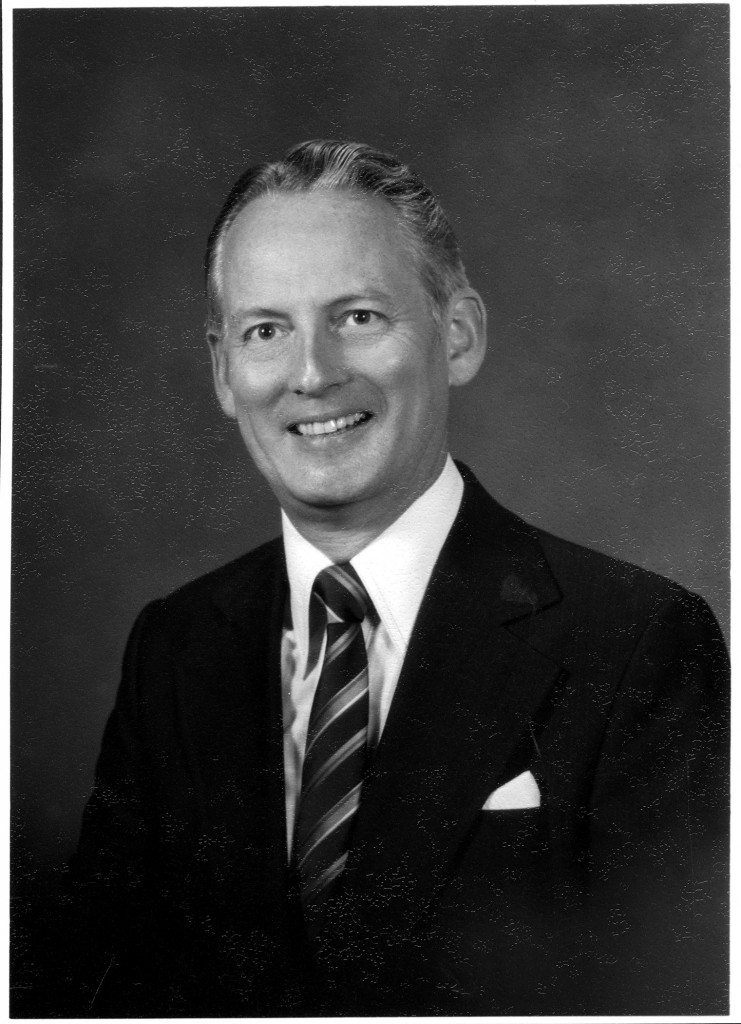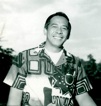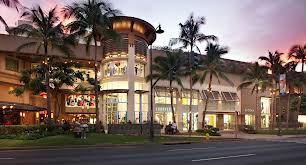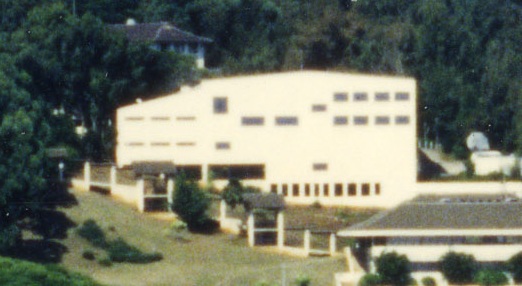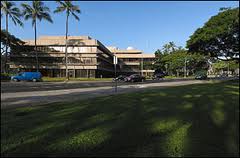Timelines
1970s
The 1970s until well into the 1990s is typified by the statement “stepping up: moving out” while Kamehameha Schools continues to make program changes and implement new initiatives that had their roots in the 1960s Booz-Allen & Hamilton report.
1970
March 3, 1970
Concert Glee performs for Queen Elizabeth II as her plane refuels; with her are her husband, Prince Phillip, and their 19-yr-old daughter, Princess Anne. The royals are met by Governor & Mrs. John A. Burns and the Kamehameha Concert Glee girl’s singing Waialae. Midway through her welcome reception, The Queen asked if they might go back out to hear the music. Prince Phillip mentioned to the girls that they enjoyed the singing very much. As the girls sang Aloha ‘Oe, the Queen boarded her plane, waving goodbye to all who had come to see her.
BOARDERS–To reduce crowding in the Kamehameha Schools dormitories, all Oahu students are not eligible to board. Three new buses are purchased to provide transportation to rural Oahu students.
ADMISSIONS–Admissions criteria to Kamehameha Schools changes. New applicants for grades 7-12 will compete only with other applicants within their own geographic district.
1971
The appointment of Trustee MATSUO TAKABUKI (1971-1993) causes controversy within the Hawaiian community. Additionally, as Takabuki takes control of investing, the “lead Trustee” system evolves concentrating power contrary to their fiduciary responsibilities to know everything and be accountable.
March 18, 1971
Herbert Kealoha Keppeler dies. Born in Pearl City, and a 1919 graduate of Saint Louis, he was an employee of the Bishop Estate for 36 years, Mr. Keppeler was also a Trustee for 8 years starting in 1962. He first came to work at Bishop Estate as a surveyor with a Bachelor of Science degree in engineering.
July 27, 1971
The Internal Revenue Service challenges Kamehameha Schools tax-exempt status on the basis of its Hawaiians-only admissions policy which is compared to segregated private schools in Mississippi. The challenge is dropped.
October 15, 1971
Two women whose children were not accepted for admission to Kamehameha Schools file suit in Circuit Court to change the admissions policies. They claimed that the ability to speak without a pidgin accent and high socioeconomic status were factors for acceptance. Their suit was dismissed.
1972
January 1971
Arthur “Jack” Darvill becomes President of Kamehameha Schools, effective January 1972, replacing retired James Bushong. He was formerly the Director of Extension Education; he is replaced in that position by Mr. Fred Cachola, 1953 graduate of Kamehameha and former Principal of Nanaikapono Elementary School in Nanakuli.
Fundraising this year is no longer thru the Kalendar. Instead, students will sell candy, with prizes going to the top sellers.
KEEP admits its first group of 28 Kindergarteners. It is a research and development operation addressing itself to practical problems facing children and teachers everyday.
The youngest preparatory school students in Kindergarten and first grade, learn to read using the Initial Teaching Alphabet (I.T.A.). Devised by Sir James Pitman, the system is similar to a phonic-based teaching tool. The system has been in place for several years, at this point.
This year, Kamehameha decided not to renew the lease of the land at Kalama beach. The original negotiation of the lease took place in 1946, and stipulated that the Estate would maintain the premises and pay $1.00 a year. One of the reasons for the discontinuation is the need to repair the roof, estimated to be a $20,000.00 job. Budget limitations force Kamehameha to give up the lease.
Dr. Murl Anderson resigns as Principal at Kamehameha. Dr. James Harpstrite replaces him.
The ILH starts a girl’s basket ball league.
1973
Kamehameha Schools band takes a summer tour of Europe.
1974
MYRON THOMPSON is appointed Trustee to fill the vacancy left by the death of ATHERTON RICHARDS.
Kuilima Hotel is the site of a meeting of Trustees and 7 top administrators to establish a mission statement and goals to guide the Schools for the next 10 years.
1975
ROBERT SPRINGER becomes head of Campus Programs which includes day and boarding programs, all educational divisions and departments and Student Personnel Services.
DAVID PETERS, KSK 1975, is the first Kamehameha student to become a National Merit Finalist and to win a scholarship to the college of his choice.
1976
Construction of the Royal Hawaiian Shopping Center in Waikiki begins on the site called Helumoa where Kamehameha V enjoyed his seaside hale pili and gave it to Pauahi upon his death.
KEEP (Kamehameha Early Education Program) becomes an Educational Division rather than an Extension Education Division program.
1977
ANTHONY RAMOS, KSB 1958, is the the first Kamehameha Schools alumnus to be high school principal.
Kupulani, a conception through age 5 program begins at Ko’olauloa area of O’ahu. KEEP research shows that the foundation for future academic success is built during the preschool years.
The Home Visitor Program, one of three pre-kindergarten education services through the KS Center for Development of Early Education, assists native Hawaiian families by guiding parents with prenatal care through their child’s early development stages. He Aha Ka Meahou Ma Kamehameha, Winter 1990, p. 6
The Frank E. Midkiff Learning Center opens at the Kapalama high school campus on Konia field.
1978
Kamehameha Schools /Bishop Estate begins selling its entire residential lease portfolio of 13,000 house lots to comply with a judge’s interpretation of Act 185, the leasehold reform passed by the 1975 State legislature.
Kekuhaupi’o fieldhouse is purchased by St. Louis High School for $1.00, and was in use as their fieldhouse until 2013.
A computer program randomly selects students for admission from kindergarten through sixth grade. After grade six, students must test competitively and only an excellent outcome ensures their continued admittance to grade seven.
Nanaikapono, Nanakuli, and Pahoa public schools offer the successful and effective KEEP reading program.
1979
The Royal Hawaiian Shopping Center is completed at Helumoa, Waikīkī. It is the Schools largest revenue generating commercial property.
Bishop Estate Trustee, Land and Finance Divisions move to Kawaiaha’o Plaza in downtown Honolulu.
Federal judge, SAMUEL W. KING, issues a preliminary ruling stating that key provisions of the State Land Reform Act forcing landholders to sell to lessees is unconstitutional.
The new Kekuhaupi‘o athletic complex opens at Kapalama.








